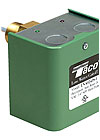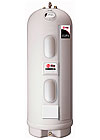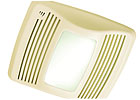
This year’s AHR Expo was held in Dallas, and it set records for the number of exhibitors and attendees for what we in the industry would refer to as an “off-year” show, with more than 30,000 in attendance from all around the world. Although I found some great ideas and new products that will interest many of you, I would like to start off with some important industry news regarding refrigerants.
The Future Of Refrigerants
I find that it’s important for me to attend this annual event not just to see what’s new, but also to have an opportunity to meet with some of our industry’s brightest minds to find out what is happening and where things are headed. The DuPont booth is always an important stop. What I really wanted to know this time is whether their best people are still holding to the story that there will be no “drop-in” replacement for R22, which will no longer be used in new equipment (here in the United States) in 2010, and will go out of production in 2020, with annual decreases in production from 2010 to 2020. The scientists I spoke with reaffirmed that an across-the-board drop-in replacement for every system and application is out of the question; and the refrigerants they have developed to replace R22 in HVAC applications can only be applied on a case-by-case basis. They say that their ISCEON 9 Series HFC refrigerant blends are more friendly to mineral oils than R410A as an example, but I’m still not convinced that will be any replacement refrigerant for many of the millions of R22 residential heat pumps and air conditioners that we are selling today.The problem, of course, is that even if they can come up with an HFC/hydrocarbon blend that is a bit more miscible (mixable) with the mineral oil in existing R22 systems, these new refrigerants produce a drop in cooling capacity, which is made even worse in systems with enhanced tubing in the coils, and it is harmful to many internal seals.
However, that wasn’t the most striking refrigerant news, for the folks at DuPont and Honeywell were both talking about new refrigerants for use in motorized vehicle air conditioners for the European market. Why is a new refrigerant needed there? Well, some European countries are calling for a ban on HFC refrigerants in those applications because of their global warming potential (GWP). So, Honeywell has developed an azeotropic (mixable) blend of refrigerants (one of which is an HFC and the other is also an HFC-containing iodide) that has a much lower GWP than existing HFCs. And although DuPont won’t discuss the chemistry of their product, they say theirs is different and that it won’t contain the ingredient iodide.
Why is all this striking news? Well, is this the start of a Phase Three phaseout of refrigerants (Phase 1 – CFCs, Phase 2 – HCFCs, Phase 3 - HFCs)? Because, if Europe is already starting to ban HFC refrigerants (such as R134a) due to their GWP, won’t that eventually lead to a global phaseout of all high GWP HFCs, such as R410a? I think so!
So, I cornered one of those DuPont scientists at one of their receptions and asked him what the future holds if HFCs are eventually banned - if there is anything else that we can use as a refrigerant. And although just 10 years ago they were saying that the components for a new refrigerant would have to come from another universe, he said that the product they are working on for the European car market may be able to be designed to also serve the HVAC market. However, the details on potential efficiencies, etc., aren’t available yet.
Then what is the rest of the world doing? Well, it’s no secret that many developing countries have no plans to ban HCFCs (like R22), and some are still using large quantities of the ozone-layer-damaging CFCs like R11 and R12. However, more progressive countries are going toward inexpensive and plentiful alternative refrigerants such as ammonia, carbon dioxide, propane and even isobutane. Although ammonia, which has long been a staple of the commercial refrigeration industry, has issues with toxicity and flammability, we’re seeing a regrowth of its use for refrigeration purposes in Europe, where the cooling portion is located remotely and glycol is then used to transport the cooling to individual boxes. And there are also locations where the first cooling stage (ammonia) is then tied (cascaded) to a CO2 system. The Tecumseh compressor people are doing work on developing CO2 for use, but its low critical temperature and low efficiency prevent its practical application for HVAC purposes.
And what about the use of flammable and explosive hydrocarbons, such as propane and isobutene? Well, the secret here is using it in such small quantities that a leak would present little potential for damage; so these gases are finding their way into household refrigerators (in Asia) where only a few ounces are required.

Plumbing And Bath
Admittedly, my forte is the HVACR field. However, the fact is that many of your companies also handle plumbing, baths and water heaters, so there are many manufacturers at the annual AHR Industry Exhibition that feature such products. I found the latest changes toLochinvar’s Power-Fin boiler series interesting, because they really simplify matters. Yes, I’m an old-school technician who still remembers those days we had to come up with all sorts of time clocks and sequencers to stage boilers. But I noticed that Lochinvar’s new product not only has its own built-in 8-unit cascading sequencer, but they now have their own easy-to-read controls for status and diagnostic information, plus a 0-10V input to integrate with building control systems.www.lochinvar.com






